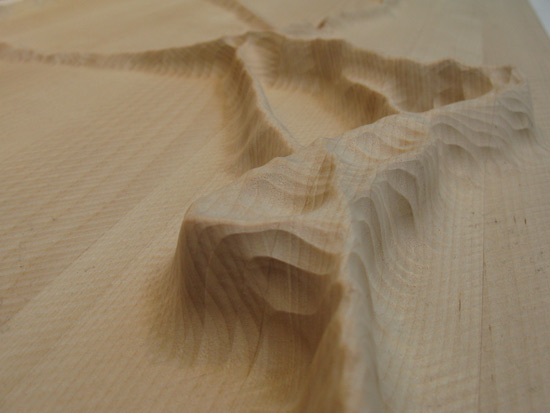To clarify, I was never raised as a girly-girl, and I'm pretty sure my mum (or mom, whatever you prefer) was not a girly-girl either. All that time and concentrated focus on grooming - hair, nails, accessories - not to mention the notion that females are there to attract male attention and boost male egos - no, not for me. I can lament my lack of ability to put on make-up in any competent way but it doesn't stop me from having fun, or even to attract male attention when I want to. I do despise those Inspirational Quotes and Ho Ho Humour pics that go around Facebook, but I do chortle at the ones poking fun at women's magazines and their persistent attempt to make us women feel inadequate. You know the ones: HOW TO GET A BIKINI BODY: PUT A BIKINI ON YOUR BODY.
And weddings. That's just another can of worms. I don't understand why a woman wants to spend so much money on one day, wearing a white dress that has, let's be completely honest, NO significance in the 21st century, being handed like chattel from one man (her father) to another (her future husband), and then having some shaman (that has, let's be honest, no significance in the 21st century) say - to everyone's absolute glee, "I now pronounce you man and wife." You're a wife while your little hubbie can still be a man and have other external relationships in society.
OK, enough moaning.
I must put in the disclaimer that my mama would surely and happily have taught me how to cook, and she certainly did all the cooking in the household like a traditional mother, but it just never came up because I never expressed the inclination. I never really got into foodism until my 30s. And now I'm addicted to episodes of Come Dine With Me.
Anyway. On to the list.
5. Other woman: "Oh, your Mama used to make the best [insert name of Mama's famous dish]! Didn't she teach you how to make it??"
Um. NO.
4. Other woman: "I just love [insert ethnic heritage relevant dish that Mama often made]. Didn't your Mama show you how to make it?"
Um. NO AGAIN.
3. Other teenage girl: "You're still using pads? Didn't your Mama show you how to use tampons?"
OH, NO INDEED.
2. Other woman, tucking in the tag of my shirt that had been sticking out: "My Mama always told me that women have to look out for each other."
MY MAMA SURE DIDN'T.
and at number 1. Me: "When I shave my legs in the shower I always miss spots because I'm not wearing my glasses."
Other woman: "Didn't your Mama show you how to shave by feel?"
Yeah, RIGHT.
And now I'm trying to remember why on earth we were talking about leg shaving in the first place.
Friday 26 July 2013
Friday 14 June 2013
Pain and tribulation
What is it about debilitating pain that makes me come up with fake advertising slogans and twee memes?




 |
| http://qkme.me/3uupsf |
 |
| http://qkme.me/3uuqje |
Monday 18 March 2013
Smart people and future-fear
This was circulating last week: Edge's annual question What *should* we be worried about? by 150 of the world's "smartest people" and especially Motherboard's synthesis.
I won't point out the obvious (e.g. about 80% of the list were male, who also seemed to have mainly Anglo-Saxon names) (ok - I just did point out the obvious)... nevertheless, it makes truly compelling reading.
For fun, here is a word cloud of Motherboard's list
and here is one including the names and titles/affiliations
'Science' and 'technology' loom large, unsurprisingly, and 'unable', but 'won'?
Anyway, I'm happy there were plenty of physicists and editors involved.
I won't point out the obvious (e.g. about 80% of the list were male, who also seemed to have mainly Anglo-Saxon names) (ok - I just did point out the obvious)... nevertheless, it makes truly compelling reading.
For fun, here is a word cloud of Motherboard's list
and here is one including the names and titles/affiliations
'Science' and 'technology' loom large, unsurprisingly, and 'unable', but 'won'?
Anyway, I'm happy there were plenty of physicists and editors involved.
Saturday 16 March 2013
Visualizing information
There was a rather spectacular flounce on the PhD Design listserv yesterday... shall be interesting to see how the list discussion protocol continues. Two decades of internet communication and we still haven't learned etiquette.
First I must start with someone I know personally: Miska Knapek.
Miska takes various types of environmental data and turns them into 2D and 3D explorations, provoking us to see our Earth and our relationship to our environment in new ways.
Here's a look at Helsinki in 2007 - through sunlight:
 |
| Image: Miska Knapek, from here |
"On the work's vertical axis, columns of dots recount the sun's activity from the beginning of the day ( i.e 00:00 ) at top, to the day's end (ie. 23:59 ) at the bottom, in 10 minute steps. The 182 columns, from left to right, show every other day in the year, from the beginning of 2007 to the end. The size of the circles indicates the quantity of sunlight. A 2007 Helsinki's light is retold. Intensely light in summer - in the middle - with occasional rain and clouds darkening the day, and intensely dark in winter - surrounding the light summer period."
Here is wind data translated into a tangible medium:
 |
| Image: Miska Knapek, as seen on Design Boom |
Makes you perceive wind in a new way, perhaps? See more of his work here.
Humanitific has written several blog posts on Information Design, with some lovely examples from almost forgotten history such as this gem from Isotype Institute:
More on Isotype by Humantific here and here.
Here's another entry on Lost Stories:
"Willard C. Brinton (1880-1957) remains a relative unknown, one of several largely unsung, historical visual thinking pioneers. No entry for Brinton appears on Wikipedia, for example. Who he was, what he did, and why it was important is one of many stories buried in the history of Information Design.
Published in black and white when Brinton was thirty-four years old, the 371 page Graphic Methods for Presenting Facts is an impressive, early survey of what would today be considered to be bare-bones statistical diagrams and graphic techniques that existed at that moment. Now scarce in original form, this early volume is recognized as the first American book focused on graphic techniques geared for a general audience."
More interesting historical stuff here: Making Sense of the Early SenseMakers
Data Visualization 1890
The Information is Beautiful site and books (David McCandless) are well-known, rightly so:
 |
| Image source: www.informationisbeautiful.net/visualizations/when-sea-levels-attack-2/ |
See also Manuel Lima's Visual Complexity, a huge collection of information design examples. These ones, for example, are by yWorks: a "huge site map laid out and routed organically".
 |
| Images copyright yFiles - see description here |
 |
| Image by CarbonVisuals via Infosthetics |
it "starts with the individuals: when they were killed, coupled with the years they potentially lost. Each arc represents a person, with lived years in orange and the difference in potential years in white. A mouseover on each arc shows more details about that person."
See the original work here, including updated info from 2013.
 |
| Image by Periscopic, via Flowing Data |
See the original work here, including updated info from 2013.
It's cliché, but in today's complex world intelligent, wise information visualization goes far to help us understand a few things a little better - and sometimes just to have a little fun. Where these people, sites, books, and collections really contribute is to help us identify the propaganda and the dodgy methods of representation, as this work will never be neutral or without intent.
Here are a few more for your weekend viewing pleasure (thanks to those who posted these on PhDDesign):
the effervescent Edward Tufte
Fernanda Viégas and Martin Wattenberg
Density Design (Design Department, Politecnico di Milano)
Sunday 3 March 2013
Time and work in mass production
Here are some intriguing
stats on product manufacturing compiled by Dwell magazine back in 2006
(September, p. 240):
|
|
Time to make in factory
|
Machines employed
|
Humans employed
|
Origin(s) of main materials
|
|
Orgo
clothes hanger from Normann Copenhagen
|
1 minute
|
1
|
3-4
|
U.S.
|
|
Timbuk2
Classic messenger bag
|
10-20
minutes
|
13
|
7
|
Taiwan,
China, Vietnam
|
|
Miele
S4 vacuum cleaner
|
25
minutes
|
10
|
7
|
Germany
|
|
Fontana
Arte Avico lamp
|
1
½ hours
|
3
|
6-8
|
Italy
|
|
Bosch
Nexxt washer/dryer
|
2
½-3 hours
|
7
|
120
|
U.S.,
Mexico, Slovakia, Germany
|
|
Emeco
Navy 1006 chair
|
6-10
hours
|
12-16
|
15-25
|
U.S.,
Canada, China, Germany, Austria
|
|
Alvar
Aalto vase from Iittala
|
8
hours
|
2
|
10
|
Finland
|
|
Knoll
Saarinen Womb chair
|
10
hours
|
3
|
13
|
U.S.
|
|
Toto
Guinevere toilet
|
50
hours
|
18
|
20
|
U.S.
|
|
Herman Miller
Eames lounge and ottoman
|
77
hours
|
12
|
15-20
|
U.S.,
Canada, China, Germany, Austria
|
|
Angela
Adams tiles for Ann Sacks
|
160-240
hours
|
2
|
3
|
U.S.
|
|
Emma
Gardner Tiny Stripes rug
|
1,920
hours
|
0
|
1-5
|
Tibet,
China
|
More articles on
makers and manufacturing from the same issue here.
Subscribe to:
Posts (Atom)



